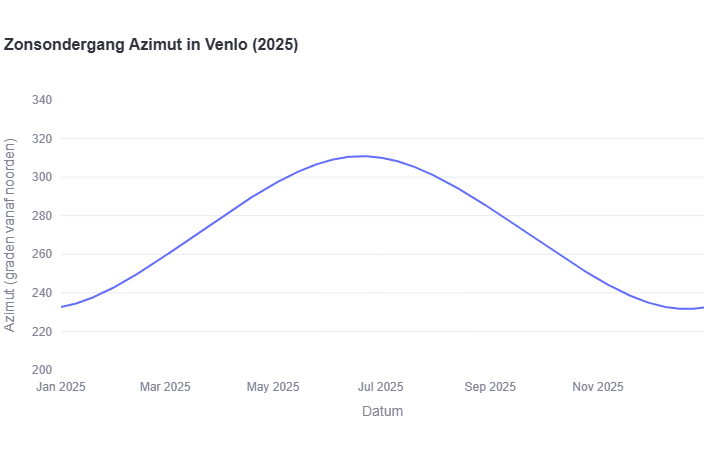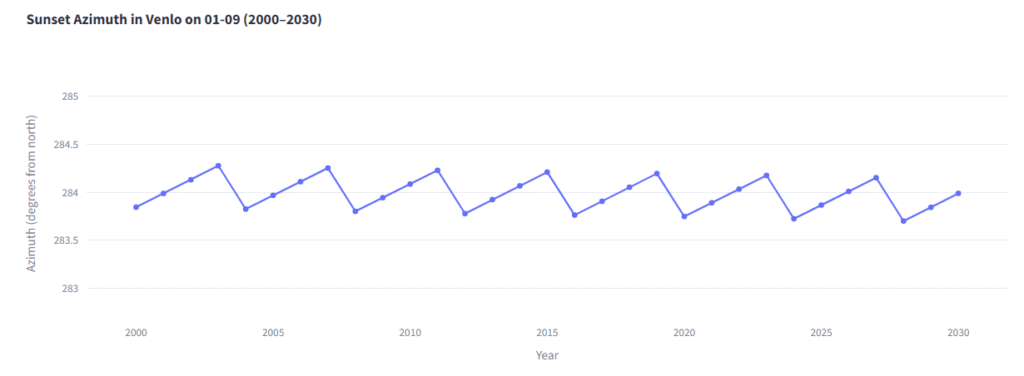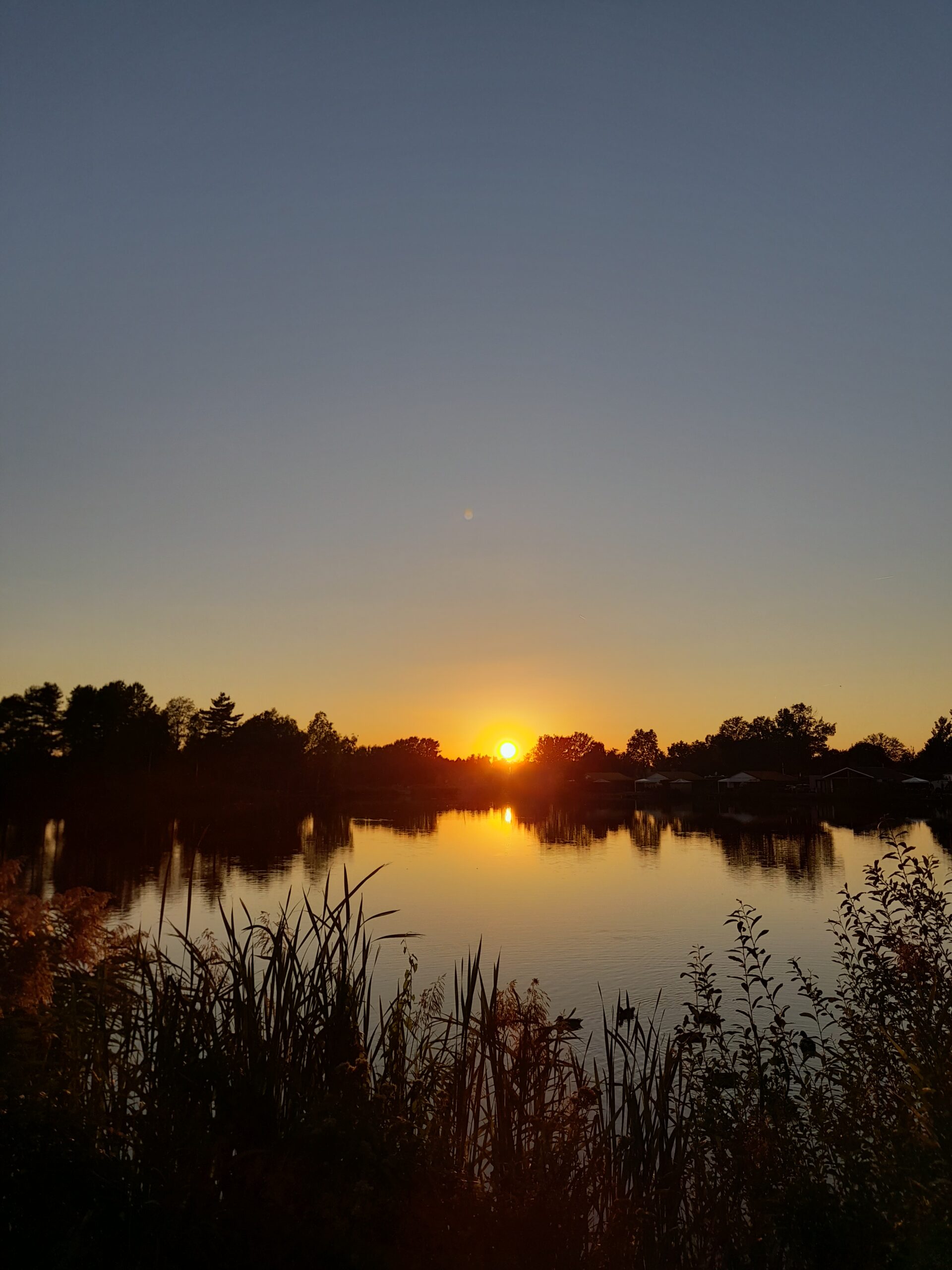I work at a campsite and I often enjoy the sunset. But it moves through time. so I was wondering, “Where exactly does the sun go down?”. If you follow my blog, you know that I didn’t just want to know. I wanted to see it, understand it, and visualize it.
So I pulled out Python, solar data, and a satellite image. (and of course ChatGPT)
Sunset isn’t random
Every day, the sun sets at a slightly different spot on the horizon. In summer, it shifts toward the northwest. In winter, it dips down in the southwest.
That happens because of the Earth’s tilt. It gives us seasons. But it also creates something else: symmetry.
The data: azimuth vs date
Azimuth means the direction measured in degrees from true north.
- 270° is exactly west
- 308° is northwest
- 231° is southwest
I calculated the sunset azimuth for every day in 2025 in Venlo, Netherlands, and plotted it: You get a clean wave shape.
By the way, the campsite is roughly 20 km from Venlo, but I assumed that it is close enough for this story to count as Venlo.

The sun sets farthest to the right (311°) on June 20
It sets farthest to the left (231°) on December 21
From chart to map
Then I translated those directions into lines on a satellite map of the local lake and campground, so I can visualize and estimate where the sun will go down at a certain date.
Each red line shows a sunset direction with matching dates and angles.

The mirrored sun
Each sunset in the second half of the year has a twin date in the first half with nearly the same direction, because the sun returns to the same angle after solstice.
| 2nd Half Date | Azimuth | 1st Half Match |
|---|---|---|
| July 1 | 308° | June 1 |
| September 1 | 284° | April 2 |
| November 1 | 247° | February 8 |
| December 21 | 231° | – |
The sun retraces its steps, just in reverse.
When does the sun set exactly in the west?
They say : the sun rises in the east and goes down in the west. Well, as we know now, not exacty. But in Venlo, the sun sets at 270° around March 30 and again on September 13.
These dates are near the equinoxes, when day and night are about the same length. The sun rises exactly in the east and sets exactly in the west.
By the way, the sun changes direction faster in winter. Between Dec 21 and Jan 21, the sunset azimuth shifts more than 10°, but between June 1 and Aug 1, only 8°.
On the long run
I also calculated the sunset azimuth for various years, It always followed the same curve, but there were very small differences. So I made also a graph for the sunset azimuth on September 1st for every year from 2000 to 2030. The result looked like this:

You can clearly see two things:
- A slow downward trend — the sun sets slightly farther south each year
- A zigzag pattern — jumps every 4 years
This tells us something fascinating about Earth’s motion.
- The slow decline is caused by the precession of the equinoxes
The Earth wobbles like a spinning top. This affects the sun’s position in the sky on fixed calendar dates. We’re in a downward phase of a much longer wave. It’s a 26,000-year cycle, so eventually, the sunset azimuth on June 21 will start climbing again — just like a pendulum. But I guess you and I won’t be there to witness it. At least not in the current physical body. - The zigzag pattern is due to leap years
Every four years, we insert an extra day to keep our calendar in sync with the solar year. But this makes fixed dates like “September 1” shift slightly with respect to the sun’s actual position. That explains the sawtooth curve.
Want to do this for your own town or holiday spot? Here is the Python code, quit easily adaptable https://github.com/rcsmit/streamlit_scripts/blob/main/sunset_azimut.py.
